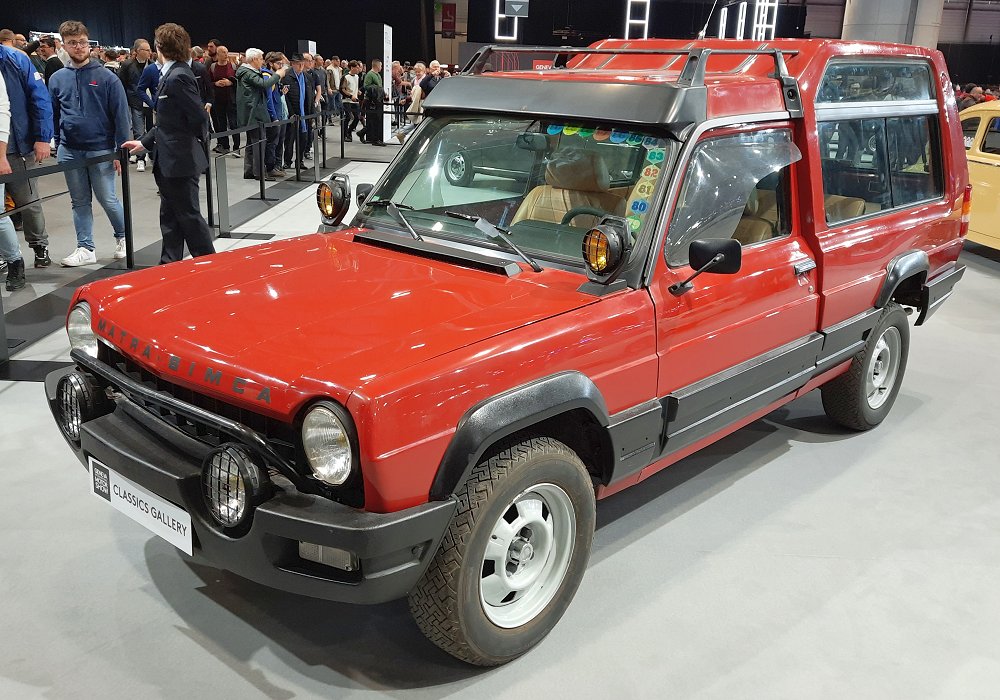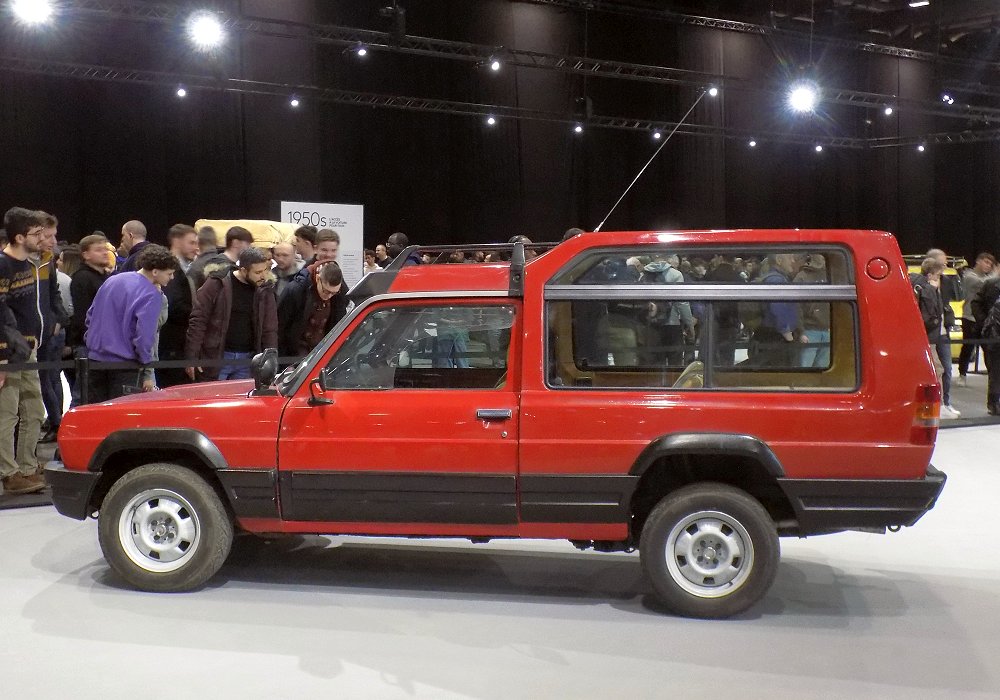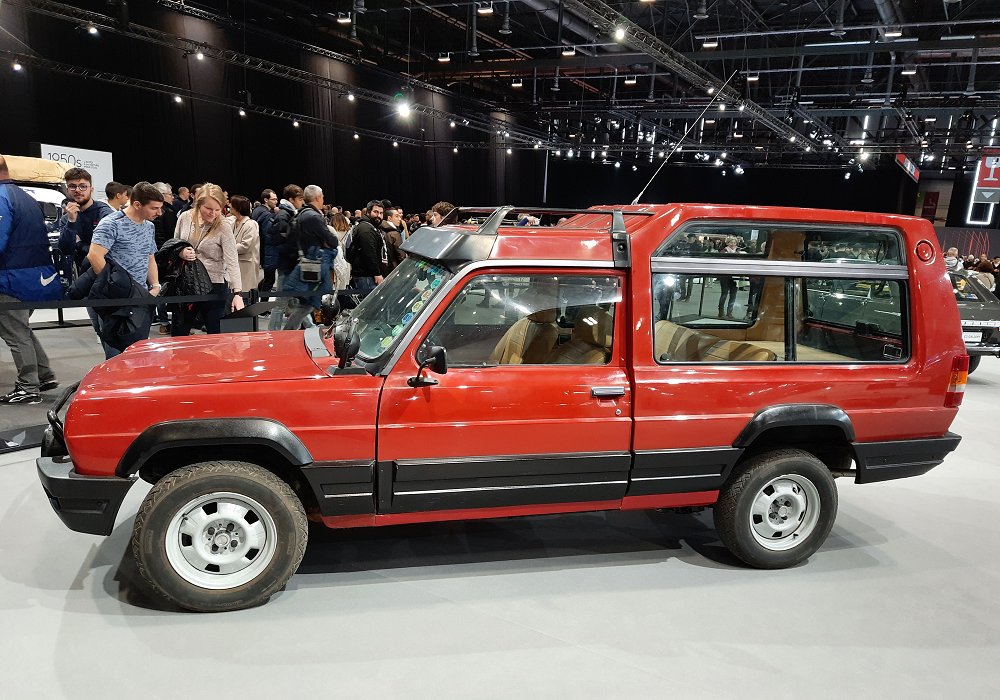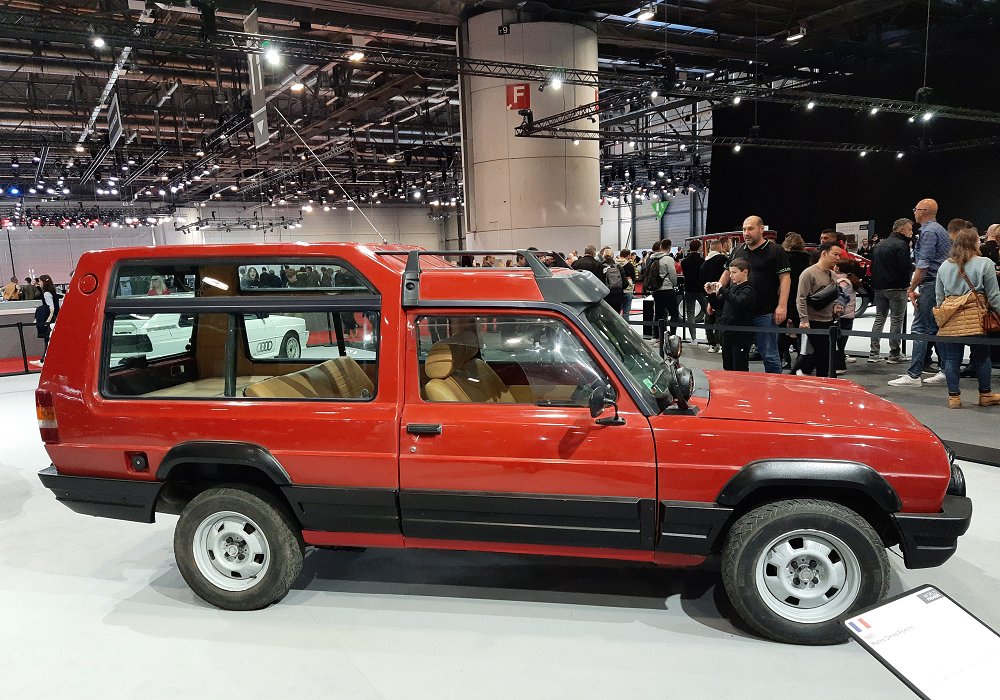Description
The Matra-Simca Rancho, introduced in 1977, was one of the most imaginative and influential vehicles ever produced by Matra. Although it was not a true off-roader in a mechanical sense, it pioneered the idea of a leisure-oriented, SUV-style vehicle years before the concept became mainstream. Practical, versatile and cleverly engineered, the Rancho blended rugged styling with affordable running costs, offering adventurous families and outdoor enthusiasts a car that looked ready for the wilderness while using the simple, economical mechanical base of a roadgoing Simca. It became one of Matra’s biggest commercial successes and laid the groundwork for the crossover vehicles that would dominate the automotive world decades later.
The Rancho was based on the Simca 1100, one of the most advanced small family cars of its time. Matra retained the 1100’s front-wheel-drive platform, its transversely mounted engine and much of its suspension layout, but modified the structure extensively. The front body section remained close to the 1100, but behind the B-pillars Matra created an entirely new rear frame made from steel tubing, supporting large fibreglass-reinforced polyester body panels. This combination of light composite panels and a strengthened chassis allowed Matra to create a tall, practical, estate-like profile without the cost and tooling complexity of a traditional stamped-steel body.
Under the bonnet, the Rancho used Simca’s 1,442 cc four-cylinder engine, producing around 80 horsepower. Paired with a five-speed manual gearbox in later versions, the engine delivered modest but capable performance, appropriate for a vehicle designed more for lifestyle appeal than for speed. The Rancho was not intended for hardcore off-roading and lacked four-wheel drive, but its torque-rich engine, low gearing, durable suspension and relatively light weight made it perfectly adequate for rough lanes, muddy campsites and loose gravel tracks. It excelled at the sort of soft-roading most buyers actually encountered, without the cost and fuel consumption of larger 4×4 competitors.
The suspension borrowed heavily from the Simca 1100, with front MacPherson struts and trailing arms at the rear. Matra reinforced key components and increased ride height to give the Rancho a more commanding presence and greater ground clearance. The result was a comfortable, compliant ride with predictable handling on sealed roads, mixed surfaces or farm tracks. Braking was managed by front discs and rear drums, sufficient given the car’s moderate weight.
Styling was a central part of the Rancho’s identity. Its rugged, expedition-inspired appearance featured a raised roofline, exposed hinges, black wheelarch extensions, a prominent front bull-bar, large auxiliary lights, roof racks and a tall, boxy rear body that emphasised practicality. The long side windows and rear quarter glazing created an airy cabin and gave the Rancho a unmistakable silhouette. It captured the adventurous spirit of vehicles such as the Range Rover, but delivered it on a scale and budget more accessible to everyday families.
Inside, the Rancho offered a spacious and flexible cabin with generous headroom, a large tailgate and a practical load area. Earlier models featured five seats, while later versions such as the Rancho Grand Raid sometimes included additional equipment for extended adventure use. The dashboard followed Simca design conventions, simple and functional, while trim materials were chosen for durability rather than luxury. The atmosphere was utilitarian but comfortable, echoing the car’s versatile purpose.
On the road, the Rancho delivered relaxed, steady performance. It was never quick, but it was stable, easy to drive and blessed with clear visibility. Its front-wheel-drive layout made it predictable in poor weather, and its soft suspension made long journeys comfortable. The charm of the Rancho lay in its character: it felt like a car that encouraged exploration, even if the terrain was no more demanding than rural French lanes or forest access roads.
The Rancho enjoyed considerable sales success, helping Matra achieve far greater volumes than with its earlier sports cars. Production continued until 1984, by which time over 56,000 examples had been built. Its appeal was broad, attracting families, outdoor enthusiasts, professionals needing a spacious utility vehicle and buyers simply drawn to its rugged styling. It became a common sight in rural France and remains fondly remembered for its honesty and ingenuity.
Today, the Matra-Simca Rancho is recognised as one of the earliest true crossover vehicles. It anticipated the modern SUV’s blend of rugged looks, practical interiors and road-focused engineering long before the idea took hold in the mainstream market. With its lightweight composite bodywork, clever packaging and adventurous personality, the Rancho stands as a uniquely creative chapter in European automotive history and a testament to Matra’s reputation for unconventional but forward-thinking design.





